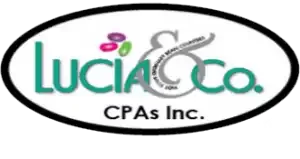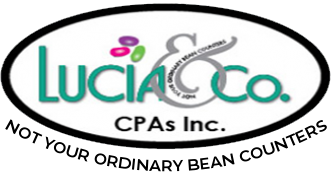QuickBooks is a software program created by Intuit, a financial management service. It provides simple accounting and invoicing payroll services and tax preparation. QuickBooks is used as an integrated tool for businesses, non-profit organizations, contractors, and freelancers. This editorial will provide QuickBooks online tips for beginners for the smooth use of QuickBooks, which will help them manage their business quickly and efficiently.
1. Connect Your Bank & Credit Card Accounts
Before using QuickBooks, connect your bank and credit card accounts. Once you set up a bank account in QuickBooks, all your transactions will be automatically categorized according to the bank’s specific rules. You can then group these transactions (“bulk approve”) to see which ones are recurring and can be scheduled directly from the accounting window. Suppose your bank account is connected to your credit cards (or any other accounts). In that case, you will be able to categorize transactions within each category (“sub-categorize”) to analyze how those transactions affect your cash flow.
2. Memorize These Handy Keyboard Shortcuts
To perform different operations quickly, memorize the keyboard shortcuts. These are easy to remember and can help you save time and increase your efficiency while working with QuickBooks.
| Function | Windows PC | Mac |
|---|---|---|
| Open the Expense Window | CTRL + ALT + X | CTRL + OPTION + X |
| Open the Estimate Window | CTRL + ALT + E | CTRL + OPTION + E |
| Open the Invoice Transaction Window | CTRL + ALT + I | CTRL + OPTION + I |
| Open the Receive Payment Window | CTRL + ALT + R | CTRL + OPTION + R |
| Display the Lists Page | CTRL + ALT + L | CTRL + OPTION + L |
| Display the Customers Page | CTRL + ALT + C | CTRL + OPTIION + C |
| Display the Vendors Page | CTRL + ALT + V | CTRL + OPTION + V |
| Display the Chart of Accounts Page | CTRL + ALT + A | CTRL + OPTION + A |
| Display the Search Transactions Page | CTRL + ALT + F | CTRL + OPTION + F |
| Display Keyboard Shortcuts | CTRL + ALT + / | CTRL + OPTION + / |
| Print a Transaction | CTRL + ALT + P | CTRL + OPTION + P |
3. Set Up Items for Every Product/Service
Before recording transactions, set up items for every product/service you offer. An item is an accounting tool that will help you track costs, income, and expenses by type. You can track items, whether they are sold individually or as part of a package or bundle. For instance, if you are a graphic designer who sells banners, business cards, and brochures, create three items: “banners,” “cards,” and “brochures.” This way, you will be able to know the specific cost of each product/service.
4. Use the Undeposited Funds Account
If you have checks that need to be deposited but don’t have time to do it right away, click on New, then “Bank Deposit”. Select the bank you wish to deposit funds into, then check the box next to any checks you want to deposit or click “Deposit All Checks.” In addition, don’t forget about the Undeposited Funds Account (“cash on hand”), which will function as a “holding tank” for all your transactions until they are recorded.
5. Reconcile Your Bank Account
Before using QuickBooks online (or any accounting software), ensure your bank statement and QuickBooks are in sync. You can easily do this by reconciling your bank statement with QuickBooks online. To reconcile, export your bank statement to an Excel spreadsheet and then import it into QuickBooks. If a purchase doesn’t match up, use the edit option to compare the purchase to the corresponding entry in your bank statement and make any necessary changes.
6. Use Class & Location Tracking
Use class tracking if you’re planning or anticipating future growth or changes in your business, such as adding equipment or hiring more employees. This function will help you see where your money is going and how it is used. You can also use location tracking if you have many businesses connected through one main budget but physically separated by regions or departments.
7. Use Attachments
The attachment function allows you to import information from other programs into QuickBooks. For instance, if you have a customer list in Word, you can import it directly into QuickBooks by using the “file” tab and selecting “attachments.” You can also use attachments to ensure all your important documents are accessible in one place.
8. Set Up Recurring Transactions
Recurring transactions should be set up before recording any income/expense because they will help you see your business’ profitability over time. For instance, if you are selling a monthly service or subscription, create that recurring entry on your calendar so that it automatically debits the customer’s account and credits yours every month.
9. Pay Bills Directly from QuickBooks
If you have multiple bills to pay, you can quickly pay all of them from QuickBooks. From the “Bills” tab, select the bill you want to pay, then click “Pay All Bills.” In addition to paying your bills, you can also take care of other tasks, such as paying a vendor’s invoice or making payments to payroll. For example, if your business has a quarter-end payroll transaction to make an employee’s wages come out of that same bank account in which all your other transactions are debited and credited.
10. Use “Reconcile Items” to Check for Errors
Use the “reconcile items” function to see if you have any discrepancies that need to be addressed. A discrepancy means transactions that have not been reconciled with your bank statement records. For instance, if the acquisition has not been recorded, you will have an expense without a corresponding income. This red flag should prompt you to make changes in QuickBooks.
11. Add an Accountant User
You may need to consult a tax consultant or accountant when you are ready to record your income and expense transactions. If you don’t want your accountant to see all those transactions, it is best to add them under a “non-accountant user” so that the accountant cannot access their transactions (i.e., not just your income and expense, but also sales and costs).
12. Install the QBO Mobile App
Suppose you want to know the trends and progress of your business on the go; download the QuickBooks Online mobile app on your smartphone. The QBO Mobile App allows you to access your accounting data on the go and can help you be more proactive with your finances. As a bonus, you also get access to essential reports that don’t require complicated spreadsheet formulas, such as a breakdown of how much of each expense is applied toward each itemized line item.
—
Even with the tips listed above, QuickBooks is still a complicated program. Learning how to use this software to run your business effectively takes time and patience. However, once you start using it and see its usefulness, you’ll want to work in QuickBooks more and more.
The best way to learn about a new program is by starting small. Set up a few recurring entries weekly or monthly, and then gradually add new items as you go along until you are confident navigating through the software on your own.
Keeping up with regular maintenance is the best way to ensure that QuickBooks works for your business. You can follow the QuickBooks online tips for beginners outlined in this article. Still, suppose you’re not regularly recording transactions and managing inventory and taxes. In that case, you will be missing out on important information that can significantly impact your business’s health and growth.
If you don’t want to spend hours figuring out how to make QuickBooks work for your business, contact Lucia & Co. CPAs. We are happy to help!


